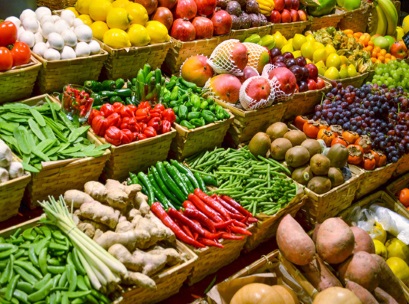 Organic industry group Australian Organic’s latest findings have shown an uptake in household food shopping allocated to organic produce and goods, with now more than six in 10 Australian households claiming to buy organic in any given year.
Organic industry group Australian Organic’s latest findings have shown an uptake in household food shopping allocated to organic produce and goods, with now more than six in 10 Australian households claiming to buy organic in any given year.
Australian organic said in a statement the annual market report, conducted by the Mobium Group, found that over one in 10 Australians (12%) consider
themselves to be highly-committed organic purchasers, usually outlaying 40 per cent or more on organic food or household products.
Currently worth $2.4 billion, the organic market is booming. The retail market is now estimated at $1.6 billion – up 46 per cent since 2012 – accounting for 70 per cent of Australia’s organic market. Further to this, Australia holds over 35 million hectares of land under certified organic management, accounting for 62 per cent of the world’s organic farmland.
“It’s inspiring to see that we are living in a time where many Australians are becoming more educated about the thousands of new chemicals and pesticides that are being used today in consumer goods, and are making the switch to go organic. Our findings show Australians are becoming more health and environmentally-conscious, thinking carefully about what they are putting into their bodies, the products they are choosing to use and the effect this has on their health,” Australian Organics general manager Sue Willis said.
The report found that for many Australians, environmental and food safety factors, along with freshness, taste and quality are the most important drivers for making organic purchases.
“Outbreaks across the world of food-borne illness, contamination and environmental scares arising from chemical exposure are contributing to this shift in our spending and purchasing habits, with many Australians citing aspects related to personal health outcomes, and the health of their families, as a key driver for choosing to go organic,” said Willis.
Professor Marc Cohen of RMIT University believes Australia are on the cusp of the next generation of the wellness movement, which sees discussion around organic vs. non-organic at the centre of the health debate. He said eating less poison is probably good for consumers and their research has shown that a week of eating 80 per cent organic food can reduce urinary pesticide loads by around 90 per cent.
While further research is needed, the rapid increase in obesity, neurodevelopmental and reproductive disorders and other chronic diseases has been linked to chemicals in foods,
home cleaning products and beauty products.
“Whilst there are many Australians who are now choosing to favour organic produce, as well as other organic household items like cleaning products, cosmetics and even clothing, unfortunately there remain a proportion of households who are not convinced,” professor Cohen said.
“Sadly most products on our shelves contain chemicals, and most of the chemicals in these products have not been tested for human safety. There are so many industrial chemicals added to products – whether food, personal care or cleaning goods – even baby products. There are fire retardants, there are pesticides, there are all sorts of preservatives that are carcinogenic and toxic to our health and accumulate over our lifespan. In fact, reports have documented measurable levels of at least 100 toxic chemicals in the bodies of virtually all people, linking to a wide array of disease, as well as nervous and endocrine problems.”
Australian Organics’ 2018 report showed that for 67 per cent of respondents, cost continues to be the biggest barrier to increased purchase of organic food, with ‘trusting it is organic’ coming in second for 40 per cent of respondents.
“Non-organic produce and products are mass produced, and to do this, it’s cheaper and easier to use toxic chemicals to preserve them, distribute them, and keep them shelf-stable for a bit longer, so while cost may be a barrier, there’s a reason for it. I would encourage Australians to buy certified organic as much as possible, or where cost is an issue, grow your own,” he said.
Willis, however, believes there is now more accessibility to, and availability of organic products than ever before, thanks to supermarket home brands at more affordable prices such as Woolworths’ Macro brand and Coles Organic.
“We’re seeing an increase in uptake of organic from millennials and younger generations – a group who typically do not have the most disposable income – and I believe this is largely due to their appreciation of their health and wellbeing, but also due to organic becoming more accessible than ever before,” she said.
When shopping, consumers are encouraged to look for the Australian Certified Organic ‘bud logo’ – the most widely recalled logo among respondents out of all organic certification marks at 49 per cent – to ensure purchases of truly certified organic products.
“We know there is a lot of confusion out there, and some scepticism too, about whether organic is truly certified organic. My job is to ensure that we continue to improve the understanding around certified organic products through the use of credited logos and labelling, including our bud logo, which is the only guarantee for consumers that what they are purchasing is genuinely organic and a safe choice,” concluded Willis.
















